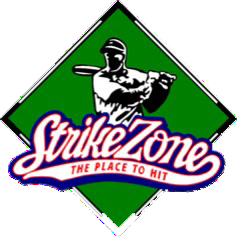
20 Mar How to Chart Pitches When Your Catcher Calls the Game

I get this question a lot – How do you chart pitches if the catcher calls the game?
If you’ve ever wondered the same thing then uncover a simple method that allows you to chart from the dugout while your catcher calls the game.
I agree with many of my college coaching friends who call pitches from the dugout because they have the time to analyze game film and stats on their opponents. But, how many of you have that kind of time? Or have access to that kind of up-to-date information? Not many and that’s why I believe that teaching catchers to call the game is well worth the time and effort. But that’s another topic for another newsletter.
For this issue, we’re going to discuss a simple method that allows you to chart the pitches that your catcher is actually calling. Let’s start off with this – if you can’t tell what a pitch is from the dugout then your pitcher has a problem with that pitch. Without trying to insult anyone’s intelligence, here’s a simple review:
- Riseballs – go Up
- Dropballs – go Down
- Fastballs – go Straight
- Change Ups – go Slow
- Curveballs – go Away from Pitcher’s Throwing Hand
- Screwballs – go Toward Pitcher’s Throwing Hand
From the dugout, it’s easy to tell fast and slow, up and down. What’s more challenging to see is side-to-side. If your pitcher throws curveballs and/or screwballs then chances are they stay on more of the same plane, so you’ve got to tell what pitch it was from your catcher instead of from the pitch itself. For instance, if your pitcher is Righthanded and throws a screwball to a righthanded catcher then the catcher should catch the ball on the glove side of her body. If that same pitcher throws a curveball to that same catcher, then the catcher should catch it on the throwing side of her body (unless it’s a backdoor curve).
Once you know this, then it’s a matter of knowing what pitches this particular pitcher throws as each of your pitchers will no doubt have slightly different pitches. Then I would simply number the pitches 1 to whatever, using the same numbering system that your catchers use for each particular pitch.
Chart the pitches that you are SURE about, and when you aren’t sure, then use the following system:
- Call your catcher’s last name (this tells her you don’t know the pitch)
- She’ll flash you 2 sets of numbers and based on the inning (even or odd) it will either be the first number flashed (odd inning) or second number (even inning).
As your pitcher gets better you should be able to tell what the pitches were from the dugout. One thing I suggest – circle all the pitches that you had to ask your catcher about. These are basically the pitches that didn’t work and the greater this number in a game the tougher it is for that pitcher to succeed. You also want to watch for patterns, meaning if it’s always the curve that you can’t figure out, then maybe it’s not really curving and we need to shelve that pitch for awhile until we practice it and get it to move a lot more.
The final piece of this puzzle is to practice this system in practice. You, or whoever charts the pitches during games, should sit down in the bullpen during pitching practice and chart the pitches. When you can’t tell what a pitch was, instead of simply asking the catcher, use your last name system and have the catcher use her numbers flash back system. Designate what inning it is before the pitcher starts pitching and remember to change occasionally.




